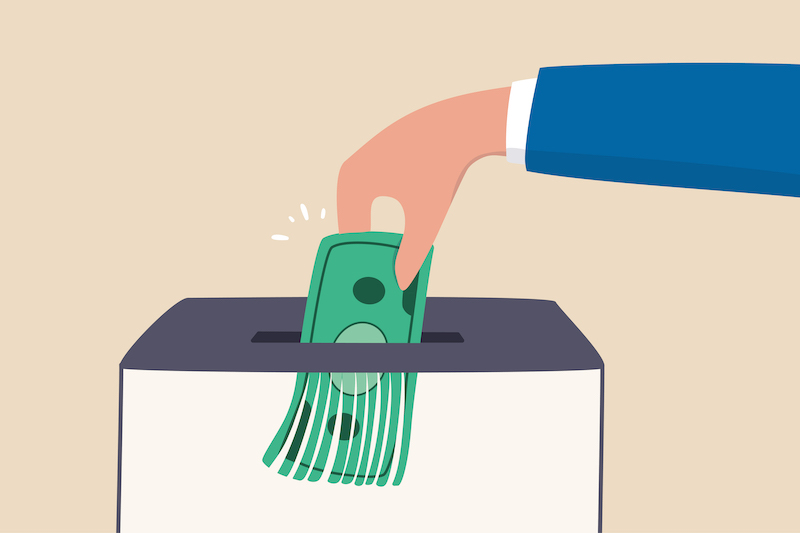When starting their businesses, entrepreneurs frequently try to do so while attempting to avoid paying for professional advice. But, of course, budgets are limited in a company’s early stages, which makes this understandable.
When given the option to either spend money on product development or get a trademark specialist, product development typically and understandably wins.
As a result, many individuals and companies submit trademark registration applications without consulting experts.
Entrepreneurs who handle the trademark application and maintenance procedure on their own rather regularly make mistakes, even though this is something that can be done successfully and without incident.
This post examines the common errors, according to our own experience, as well as some preventative measures that can be taken in the process.
What Is a Trademark and Why Is It Important?
Trademarks assist customers in differentiating your goods and services from your competitors by identifying your company with distinctive symbols, names, slogans, logos, and designs. These are designed to mark your products and services as original and distinct.
A trademark makes it possible for clients to identify your brand in a congested market quickly.
Following the approval of your trademark registration, you have the exclusive right to use the mark and to stop anyone else from doing so without your consent within the relevant jurisdiction.
How Do You File a Trademark in Singapore?
To obtain trademark protection requires completing an application for registration with the Intellectual Property Office of Singapore (IPOS), paying the necessary costs, and registering a trademark internationally.
Today, nearly every nation has a trademark register that offers complete trademark protection upon successful registration. Moreover, once a trademark in Singapore is registered, they are secured for ten years and are renewable indefinitely.
The process of registering a trademark in Singapore is straightforward. Still, there are certain typical errors that many companies make when submitting their applications and supporting materials and using their trademarks. The nine common errors related to trademarks that you must never make are listed below. They include:
Misconceptions Regarding the TM Symbol’s Protection
We commonly presume that products have a trademarked brand when we see the TM sign on the packaging or on the Internet.
However, this symbol is only used to signify the existence of a trademark application once it has been submitted for trademark registration. Therefore, it has no legal significance and provides no defence for your business.
To benefit from trademark laws’ protection against infringement, you must complete the registration process and start using the R symbol (®) once the registrar has approved your application.
Not Conducting Trademark Research
This is maybe the most fatal error a startup can make since it has a double-edged effect.
If the trademark is already registered for anything identical by another company or organisation, it may firstly lead to legal proceedings and expensive infringement litigation.
Secondly, since approval will never be given for your application, the money you invest in the registration procedure, including filing and legal expenses, would be badly wasted.
If you plan to register your trademark in Singapore, you may utilise the trademark search tool to check the database to discover if the trademark you want to apply or anything similar is already in use.
Using the Wrong Trademark Class When Applying
You can choose from a wide range of trademark classes based on how you want to use the trademark for your goods and services,
Another common error is selecting the wrong trademark class, which is enough ground for an application to be rejected. Again, IP service companies can assist you in resolving this problem because they manage hundreds of trademarks.
Failing to Use a Trademark In Commerce
Before you apply to register a trademark, trademark registries require you to utilise it for business purposes, like selling your goods and services and using it on your website.
Without actual usage in commerce, simply declaring that you want to register the trademark might result in your application being rejected.
Failure to Renew a Trademark in Time
Losing track of the deadline for trademark renewal is also a grave error because making a fresh application after the expiration date is substantially more expensive.
Providers of outsourced IP services may be able to help notify you when it’s time to do so, assuring prompt renewal and cost savings.
Not Using Outsourced IP Service Providers
Many businesses opt to conduct the trademark registration procedure themselves rather than contracting with outside IP service providers. However, this can be even more expensive, take a longer time, and possibly fall short of your goals.
The legal aspects of trademarking are frequently complicated, and you must invest a lot of effort in your study and fact-finding.
On the other hand, IP service providers are professionals with years of expertise who can critically study and analyse your trademark to determine the likelihood of registration success before submitting.
Failure to Secure and Protect a Trademark
Once the registrar has approved your trademark application, you must safeguard and defend it to stop competitors from copying your name, logo, or concepts.
An IP service provider that will legally handle trademark infringements might be of great assistance. For additional security, you may set up a Google Alert for the name of your trademark.
The worth of your company may decline in the future if you don’t engage in trademark protection. Occasionally, in the commercial world, trademark laws might contradict common sense and logic. It is therefore advisable that you collaborate with an IP service provider to realise the branding for your startup.
Not Registering the Trademark That Provides Greater Protection
You might choose to register a trademark in various ways: It could be either a device mark or a word mark (in the plain font or just the emblem). Or you could have the mark in colour or black and white, or, if feasible, have several trademarks for the same product.
Alternatively, go for a trademark that is in 3D form, with sound, scent or colour, or as a hologram, word, number, or package. Learn more about non-conventional trademarks that can be registered in Singapore.
Based on the varied procedures in the various countries, a trademark specialist will be able to assist you in this regard. When developing a trademark strategy, it is essential to discuss plans to increase your trademark protection’s scope.
Avoiding Claiming Priority When You Can Do So
If you have submitted a trademark registration application in a member country of the Paris Convention or a member country of the World Trade Organization (WTO), you would be given the right to assert priority when submitting applications for the same trademark in other member nations within six-month beginning on the date of the initial filing.
The second application will be regarded as having been submitted on the same day as the first application if priority is asserted. As a result, your application would be prioritised in case another applicant files for a similar trademark between the two filing dates.
If another party tries to register a similar or identical trademark within six months of the second application, you may lose out if you have not claimed priority. Therefore, it is advisable that priority be asserted wherever it is feasible to do so.
You can register your trademark successfully by being extra careful while applying for it and ensuring you avoid the above-mentioned common mistakes. But if you just don’t want to take chances or get into the hassle of all the paperwork, you can engage an experienced and knowledgeable IP service provider. They would be a great help even after you have registered the trademark.
The IP laws in Singapore are quite good. Singapore is a member of both the Paris Convention and the World Trade Organization (WTO) hence it’s even more beneficial to register your trademark in Singapore. So, to take advantage of these IP laws and much more, you should incorporate a business in Singapore.




